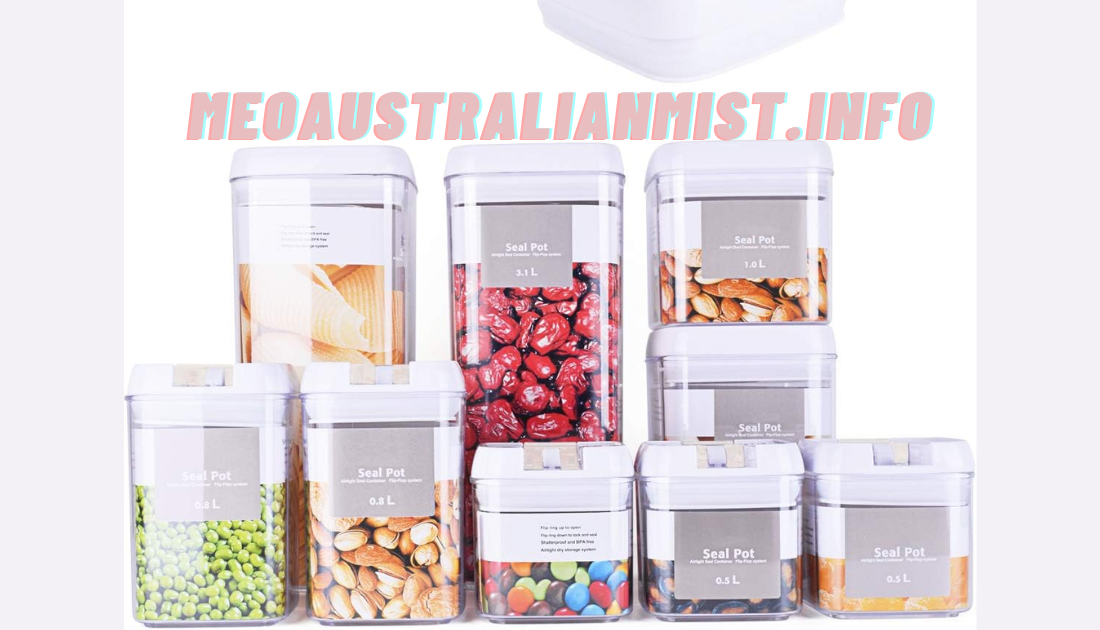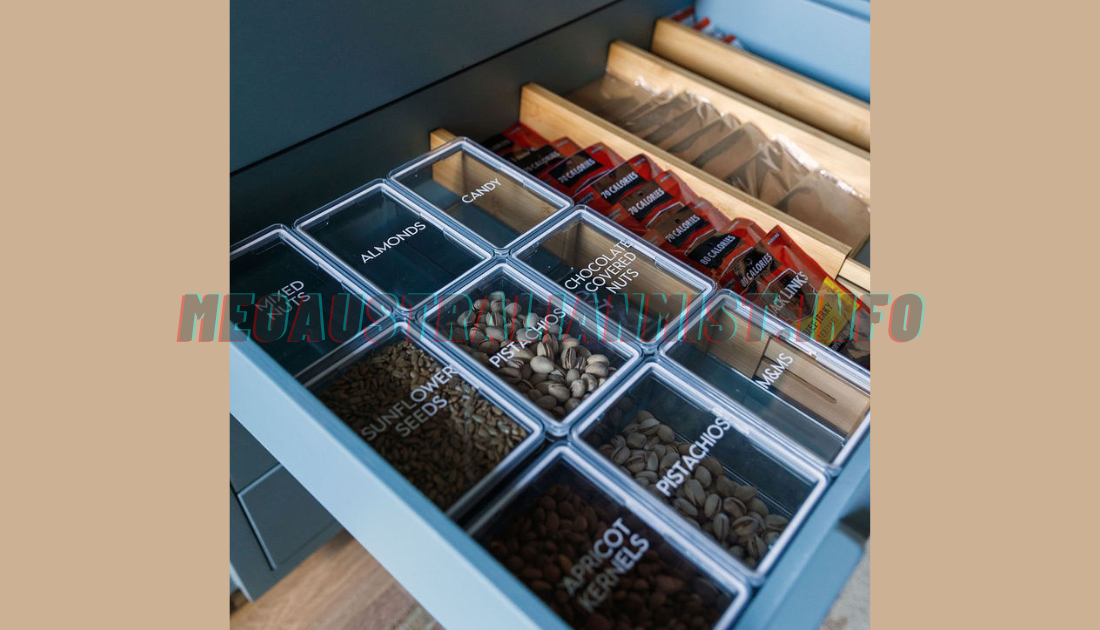
Keeping a kitchen organized and food fresh is a common challenge for many households. Airtight kitchen storage containers have become essential tools to achieve both goals, offering convenience, freshness, and a stylish way to store various foods. This article explores the benefits of airtight containers, how to select the best ones, and tips for organizing your pantry effectively. If you want a more efficient and tidy kitchen, airtight containers might be exactly what you need.
Why Choose Airtight Kitchen Storage Containers?
Airtight kitchen storage containers are specially designed to preserve food freshness by preventing air and moisture from entering. The main appeal of these containers is their ability to keep ingredients like flour, rice, and snacks in optimal condition for a longer period. Let’s examine why these containers are worth the investment.
1. Extended Freshness and Reduced Food Waste
Airtight containers lock out air, which is essential for preserving perishable goods. Foods exposed to air can quickly lose their texture and flavor. For instance, cereal often becomes stale when left in an open box. Airtight kitchen storage containers ensure that your foods stay fresh for longer, reducing the amount of food wasted due to spoilage.
2. Protection from Pests
Another key benefit of airtight containers is their ability to protect against pests. Pantry pests, like ants or weevils, can easily invade foods in poorly sealed packaging. By using airtight containers, you’re adding a layer of security, keeping pests out of your dry goods and safeguarding the quality of your ingredients.
3. Better Organization and Space Efficiency
Airtight kitchen storage containers not only keep your pantry fresh but also enhance organization. Their stackable design allows you to use space more efficiently, even in small kitchens. With clear, uniform containers, you can easily see what’s inside and quickly access what you need. By labeling each container, you also simplify inventory management, making it easier to keep track of supplies.
Key Features to Look for in Airtight Containers
When selecting airtight kitchen storage containers, it’s important to know what features make them effective. The following factors will help you choose the best containers for your needs.
1. Quality Sealing Mechanism
The primary function of an airtight container is to keep air out. Look for containers with reliable, high-quality seals. Rubber gaskets and secure locking mechanisms are essential to ensure that the container remains airtight even with frequent use.
2. Material Durability
Containers made from durable materials, such as BPA-free plastic or glass, are preferable. BPA-free plastic containers are lightweight and shatter-resistant, while glass containers are non-reactive and better for long-term storage. Choose the material that best suits your lifestyle and storage needs.
3. Transparency
One of the major advantages of using airtight kitchen storage containers is the ability to see the contents easily. Transparent containers make it easy to identify food items without needing to open each container. This feature is especially helpful when organizing a pantry, as it enhances accessibility.
4. Stackability and Shape
Consider containers that are stackable to maximize your storage space. Square or rectangular containers generally save more space compared to round ones, making them ideal for pantry organization. Stackable containers also add a neat and uniform look to your kitchen shelves.
5. Easy to Clean
Keeping your containers clean is crucial for maintaining food quality. Look for airtight containers that are dishwasher-safe, or those with removable gaskets for easy hand-washing. This feature ensures that your containers remain hygienic and ready for each refill.
Types of Foods Best Stored in Airtight Containers
Airtight kitchen storage containers work for a variety of foods, from dry goods to snacks. Here are some of the best food types to store in these containers:
- Cereals and Grains: Foods like rice, pasta, and quinoa benefit from being stored in airtight containers, as they are prone to staleness and pests.
- Flour and Baking Supplies: Flour, sugar, and other baking ingredients stay fresh and dry, preventing clumps from forming due to moisture.
- Snacks and Nuts: Airtight storage helps keep snacks like chips and nuts crispy and flavorful.
- Coffee and Spices: Coffee beans and spices retain their aromatic qualities much longer in an airtight container, as exposure to air can cause them to lose flavor.
By using airtight containers for these foods, you can enjoy prolonged freshness and better taste.
Tips for Organizing Your Kitchen with Airtight Containers
Creating an organized kitchen doesn’t have to be difficult. With a few simple strategies and the right airtight kitchen storage containers, you can transform your pantry into a streamlined, accessible space.
1. Group Similar Items Together
To make the most of your containers, start by grouping similar items together. For example, keep all your baking ingredients, like flour and sugar, on the same shelf. This makes it easier to find what you need and prevents clutter.
2. Label Each Container
Labeling your containers is a simple way to enhance organization. Using chalkboard labels or waterproof stickers can make it easy to see what’s inside each container. This is especially helpful for identifying similar-looking items, such as flour and powdered sugar.
3. Use Smaller Containers for Snacks
Consider using smaller airtight containers for snacks like nuts, dried fruits, and granola. These mini-containers keep snacks fresh while reducing the risk of them becoming stale. They also make it convenient to grab a quick snack without opening a large container.
4. Stack Containers Efficiently
When stacking your containers, place heavier or larger ones at the bottom to prevent smaller ones from toppling over. Square or rectangular containers are ideal for stacking, helping you use vertical space efficiently. This approach keeps your pantry looking tidy and maximizes the space available.
5. Rotate Your Stock
To minimize food waste, practice the “first in, first out” rule. When refilling containers, place older items on top or in front, so they are used before newer ones. This method ensures that your food remains fresh and prevents you from overlooking older items.
Choosing Between Plastic and Glass Containers
A common question is whether to choose plastic or glass for airtight kitchen storage containers. Both options have advantages depending on your needs.
Plastic Containers
Plastic containers are lightweight and often more affordable. They are less likely to break if dropped, making them safer for households with children. Many plastic containers are BPA-free and dishwasher-safe, making them convenient and safe for regular use.
Glass Containers
Glass containers are non-porous, meaning they won’t absorb odors or stains, which is ideal for long-term food storage. Although glass is heavier and more prone to breaking, it is also microwave-safe and can handle temperature changes better than plastic. Glass containers offer a cleaner, more aesthetically pleasing option, but they may require more careful handling.
Conclusion
Airtight kitchen storage containers are invaluable for keeping your pantry fresh, organized, and pest-free. By selecting the right containers with secure seals, stackable shapes, and durable materials, you’ll transform your kitchen into an efficient, clutter-free space. Organizing with airtight containers not only prolongs the shelf life of your food but also brings a sense of order to your daily routine. Embrace the convenience and practicality of airtight kitchen storage containers to keep your kitchen fresh and organized, every day.

Leave a Reply